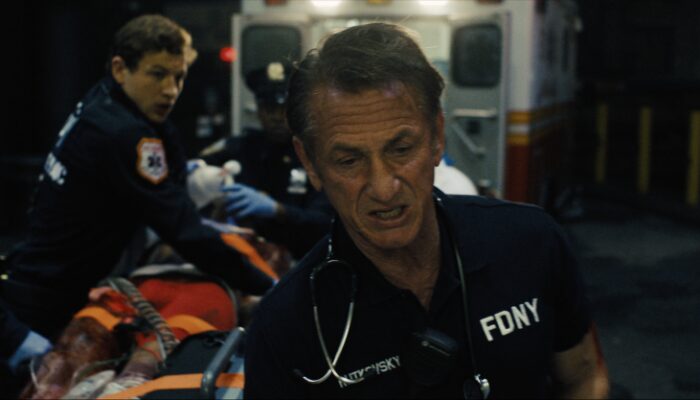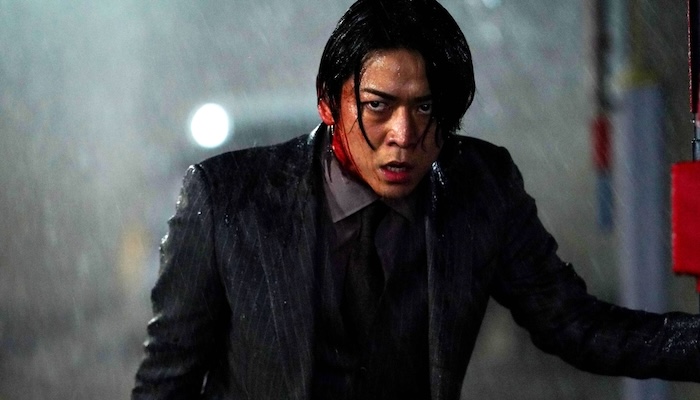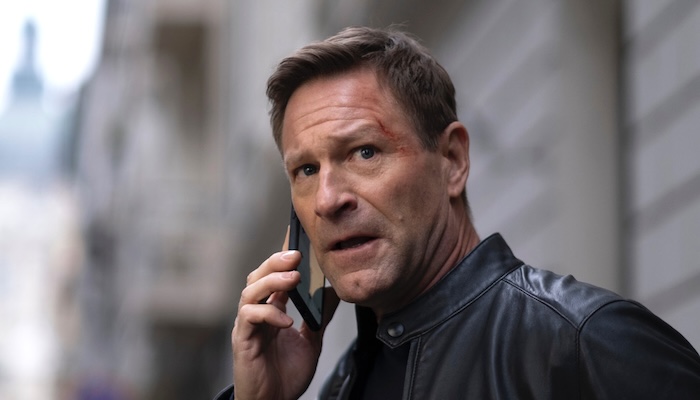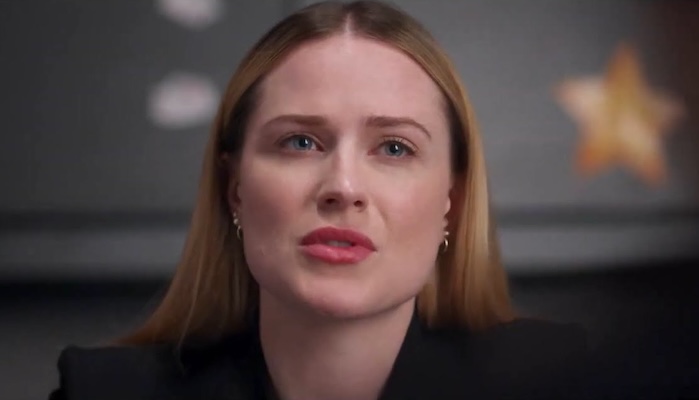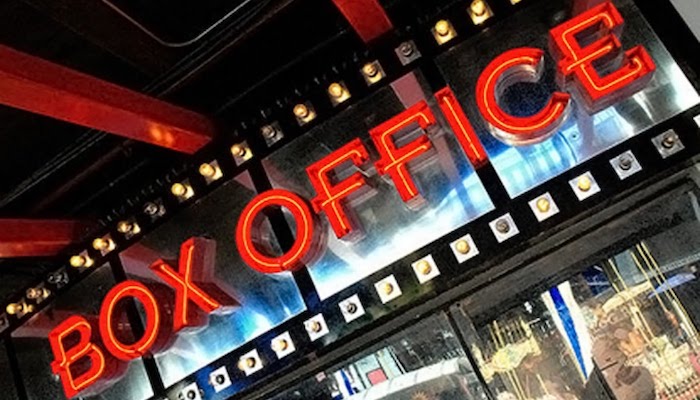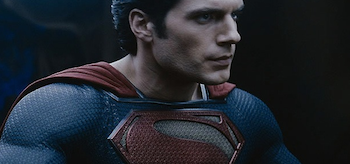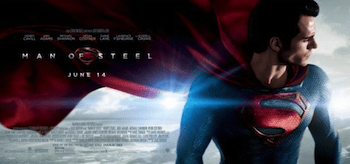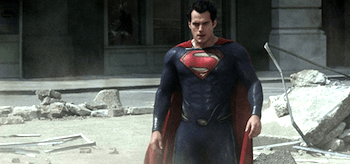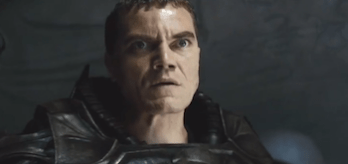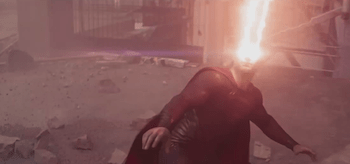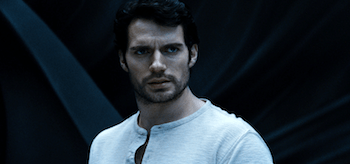Film Review: MAN OF STEEL (2013): Superman Comes Home At Long Last
Man of Steel (2013) Film Review, a movie directed by Zack Snyder and starring Antje Traue, Henry Cavill, Michael Shannon, Amy Adams, Russell Crowe, Kevin Costner, Diane Lane, Christopher Meloni, Laurence Fishburne, Jadin Gould, Ayelet Zurer, Tahmoh Penikett, Michael Kelly, Dylan Sprayberry, and David Paetkau.
Like Andy Wachowski and Lana Wachowski‘s Matrix, Matrix Reloaded, and Matrix Revelation, Man of Steel dealt with (extremely lightly) humanoids being grown outside of a womb for a specific purpose, it featured two “Burly Brawls“, and it delved into the main character, a Christ-like figure, taking a leap of faith and making a sacrifice for humanity.
The first act of Zack Snyder’s film was the Superman movie that fans have always wanted yet never received until Man of Steel.
The first act / Krypyton segment of Man of Steel was gripping, it was energetic, it was new, it was enthralling. The first act was edge of the seat entertainment and it escalated and expanded on multiple levels: the world represented, the technology, the costumes, the impending doom, the coup d’état, etc.
At the center of the Krypton segment was a moral division between two former yet singularly aligned forces. Hypothetically, this division could have been between two different political parties: one for violent and immediate change and one for the peaceful acceptance of the inevitable.
The Krypton segment was a rich and fulfilling exertion to a world and culture the viewer had never seen before, a world riddled with subtle James Cameron influences.
The flying Avatar dog was a brilliant plot element. It could have easily been an indigenous Pandora retread but Zack Snyder used it to add to the excitement of the few scenes it inhabited.
Like the dog and many other ingredients, it was the little things and the surface attention to detail (the Kryptonian body armor was good but the lack of helmets made no sense, especially for the soldiers) that made the Krypton segment so interesting.
General Dur-Zod (Michael Shannon)’s coup trial, the sentencing, and seeing it carried out were high points in the film unmatched in the film’s remaining acts.
The effectiveness of the Krypton scenes was bolstered heartily by what was flowing into the viewer’s ears: Alan Silvestri‘s score was not one of explosions and bass-lines, but one doubling the emotions on-screen, making actions scenes breathless excursions, and emotionally moments pivotal and gigantic even when they concerned the mundane. Like the musical accompaniment in Robert Zemeckis‘ Beowulf, the score for Man of Steel was surprisingly strong though not iconic like Danny Elfman‘s Batman score or as impressive as Hans Zimmer‘s Inception score.
Like Christopher Nolan‘s The Dark Knight Rises, Man of Steel did not sustain the momentum it created at its outset on Krypton. The same scenario happened at the beginning of Martin Campbell‘s Green Lantern when that film transitioned from its alien characters (universe sector 666) to earth and its human characters.
When Kal-El landed on Earth, Man of Steel switched gears, it down-shifted from other-world action to more recognizable set pieces. Those set pieces were interspersed with human and character moments, some of which succeeded, some of which were merely lukewarm.
Unlike Green Lantern, Man of Steel possessed strongly written characters, two of them. Those nearly three-dimensional characters were: Lois Lane (Amy Adams) and Jonathan Kent (Kevin Costner). I would have included General Zod but he was a walking, talking contradiction (we’ll get to that).
Lois Lane was stern, no fool, disposed to taking no nonsense. In short, Lois was the epitome of a modern and confident business woman (Miranda Priestly on a small scale). Though central to Man of Steel‘s storyline, Lois Lane did not have a “great moment” in the film, not like Jonathan Kent.
Jonathan Kent’s sacrifice was a magnificent human moment in the film, a segment that brought to mind the ferry boat prisoner scene in the third act of Christopher Nolan’s The Dark Knight. The viewer could feel Dr. Abraham Erskine’s fingers tapping on Steve Rogers’ chest in his last moments during Joe Johnston‘s Captain America: The First Avenger as Jonathan Kent was whisked away and the good man in Clark Kent / Kal-El / Superman (Henry Cavill) was solidified.
Unlike other Superman films, Zack Synder was able to show the vast array of Superman’s abilities in the context of one childhood scene. Man of Steel was not a showcase film like Mark Steven Johnson‘s Daredevil e.g. Matt Murdock and Elektra Natchios standing in empty rooms, twirling their weapons for the oohs and aahs of the viewer. Only the abilities that Kal-El needed in the film were used but the former scene showed that he was capable of much more, laying the groundwork for the future.
Man of Steel thankfully skipped over the finding of the space craft and baby Kal-El as it had already been covered in Richard Donner‘s Superman but this fast-forwarding caused a continuous problem in the film. The space craft and baby Kal-El scene notwithstanding, key moments and logic plot points were skipped over and screenwriter David S. Goyer expected the viewer to go with it. To his credit, due to the excellence of the first segment of the film, he had built trust with the audience, enough so that they tried to look past these plot gaps in the hopes that they would eventually payoff. The few that did could not make up for the multitude that did not.
The biggest plot hole in the entire film happened within the brilliance of its beginning: no Kryptonians left Krypton before it exploded (besides the prisoners and Kal-El). Why? David S. Goyer already established that Kryptonians were capable of space flight, had colonized other worlds, and had set up outposts in the past. Jor-El said they couldn’t leave (that it was too late) but never why they couldn’t leave and why it was too late. It certainly was not too late to hold a trial and sentence criminals to prison.
Other bothersome flaws presented themselves within the good aspects of Man of Steel.
One of the the most interesting parts of the Krypton segment was the floating artificial intelligence units and their usage. A.I. implementation and usage became a problem in the second and third act of Man of Steel. David S. Goyer introduced a concept then did not take that concept to its natural conclusion.
If the Jor-El A.I. was uploading into the Kryptonians’ ship during Lois Lane’s escape, after the upload was complete, why didn’t it take over the ship? If it could control the doors while uploading, it stands to reason that when the upload was complete, it could override and control more crucial systems. What happened when the upload into the Kryptonian ship was complete? Why didn’t the Jor-El A.I. stop the World Engine from being launched? Why didn’t it shut down the ship or crash it into Earth? If the Jor-El A.I. could close doors then it could open them as well. Why didn’t it open an outer space door and blow the Kryptonians out into space?
Speaking of doors, why did the doors stop the Kryptonians abroad their ship in the first place? They are all as powerful as Superman? One punch or kick would have gotten them through those doors instantly.
On the subject of powers, how did all the Kryptonians (besides Ka-El) know how to use their powers so expertly and so fast? Who was their teacher? How did they know that they had enhanced jumping capabilities and strength in the first place? Who told them?
Martha Kent (Diane Lane) said that when Clark was a baby, he struggled to breathe. When General Zod was first without his helmet on Earth, he had absolutely no trouble breathing even though he had trouble with his senses. The same thing happened when Sub-Commander Faora-Ul (Antje Traue) was knocked unconscious on Earth yet was seen breathing normally. How? She was breathing in alien air into a system unaccustomed to it. Just because she was unconscious does not mean she could breathe the air normally. It was contradictions and oversights like this that began to eroded the story elements that Goyer had previously set up. If those story elements had been kept intact and had remained consistent, they could have made the aliens-on-Earth plotline in Man of Steel memorable beyond the confines of a comic book movie.
Like 99% of comic book movies, Christopher Nolan‘s The Dark Knight being one exception, the villains in Man of Steel were underdeveloped. The viewer got no sense of who Dru-Zod or Faora-Ul were beyond what they were built to be. Zod was spoken of in past and present tense as polar opposites of one another yet the viewer was never given the opportunity to see what led to those personality changes. With The Joker, he told other characters (and the viewer) horrific possible versions of his past that made him what he was. Such creativity was absent with respect to General Zod and Faora-Ul. Because of this, the viewer had no idea how his mind worked and how he formed decisions.
That insight would have been of great assistance regarding General Zod’s dubious decision to use the World Engine on Earth, effectively killing off the entire human population and terraforming it to sustain Kryptonian life. Zod’s primary motivation was the sustaining of Kryptonian lives and that society. That drove him and was his purpose for existence. Why would someone like that, someone empathetic to his people’s needs, exterminate another race that is peaceful and not threatening his race in the slightest? Co-existence was not just possible with humanity, it would have been welcome. A new technological age would have occurred on Earth because of Krypotonian technology and humanities’ knowledge of the universe would have been vastly increased.
The World Engine, from what was shown in the film, could create a Kyrptonian-friendly environment out of any environment, so why not use it on an uninhabited planet like Mars? Why did General Zod want to kill to get what you needed when he did not have to, when it was free on other neighboring worlds?
After the World Engine decision was made, Zod’s biggest contradiction occurred: He said earlier to Kal-El that he had been trained to adapt but later Zod said to the Jor-El A.I. hologram that he did not want to adapt to Earth’s environment (because of the time it would take). If Zod was trained to and could so easily adapt (which he did), why use the World Engine? Again, why use it on Earth? Why not train the new born Krypotonians the techniques of speedy adaptation?
I can surmise why. Past films. The world in Man of Steel had to be in peril (in David S. Goyer’s mind). The fact that Zod used the World Engine on Earth made the film bigger and Superman’s obstacle gargantuan. After Zod had acquired Kal-El, if he had asked Earth’s permission to start a Kryptonian colony on Earth or left Earth with Kal-El, the majority of the second act and the third act of Man of Steel would have been absent of drama. The World Engine gave the latter half of the film grandeur and made the proceedings perilous for almost everyone on-screen. That was the true purpose of the World Engine.
That the World Engine had defensive capabilities made sense (it needed them if launched into a hostile environment) but with Kal-El free and invulnerable, Zod must have known (or should have surmised with his military mind) that Superman would inevitably attack it. There were numerous Kryptonians on Zod’s ship yet Zod stationed none of them as sentry to the World Engine, the only World Engine he had. With only one World Engine, wouldn’t it have been smarter to attack all the militaries of the world first, then launch the World Engine? It was probably highly unlikely but Earth’s militaries might have figured out a way to destroy it.
With regard to the improbable, the eventual victor of Man of Steel‘s last confrontation was highly unlikely – on paper – but there are multiple view points to consider. The final fight between General Zod and Kal-El was visual but substanceless until its near conclusion when the two characters were not streaking across the screen. The almost identical fight between Neo and Agent Smith at the end of Matrix Revolution was far more entertaining and more cleanly executed. There was more camera and dialogue intimacy in the fight between Neo / Agent Smith than between Dur-Zod / Kal-El. The main problem with the Dur-Zod / Kal-El fight was that Zod was right. He had been trained to fight and be a soldier since birth (think Sergeant Todd from Paul W.S. Anderson‘s Soldier) while Kal-El had no hand-to-hand combat training and no battle experience. Zod should have been able to easily counter Kal-El attacks and prevail.
There are the astute counter-arguments to consider though: 1.) Kal-El’s father, a scientist, won in his fight against Zod. All Kryptonians were breed for a specific task yet a scientist beat a soldier. That laid the narrative groundwork for Kal-El, an untrained civilian, to defeat Zod. 2.) Kal-El knew how to use his special powers better than the other Kryptonians. He had 33 years to become an expert in them and thus was able to defeat neophyte Zod with them.
Henry Cavill’s best acting in the film came after a heroic break, not just of a foe but of a code of ethics that had gone unsaid (Batman’s one rule from the Christopher Nolan films) in most-if-not-all Superman films. It was a devastating moment for Kal-El, his people, and his comic book incarnation, and it was spoiled by Lois Lane’s unnecessary appearance. If Kal-El had been left to stew in that moment, the reality of his action could have sunken in deeper, making the scene that much more pivotal to the film, his character development, and driven those points home like a hammer’s blow to the audience.
Rating: 7/10
For more movie reviews, visit our Movie Reviews Page, subscribe to us by Email, “follow” us on Twitter, Tumblr, or “like” us on Facebook.
Related Articles
FilmBook's Newsletter
Subscribe to FilmBook’s Daily Newsletter for the latest news!


